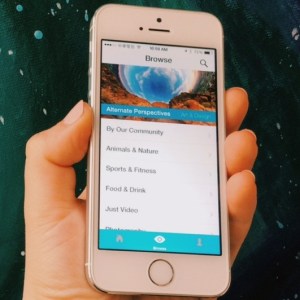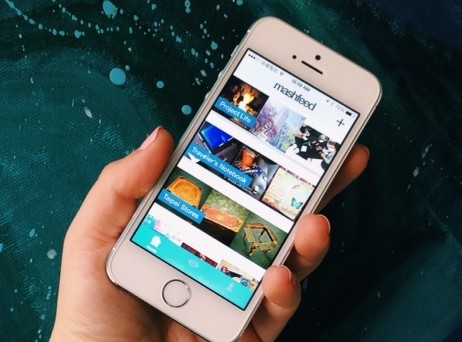At first I didn’t understand the point of Mashfeed because there are already plenty of social media aggregation platforms. Plus, many people crosspost the same content to different sites, rendering aggregators redundant. Then I realized I was using the new iOS app wrong.
Like Colorbay, a photo discovery app that I reviewed last week, Mashfeed isn’t just about finding new content. It also lets you organize posts in a better way than most social networks currently allow.
On Mashfeed, you create public or private channels (called mashfeeds) that let you add specific users, pages, or hashtags on Instagram, YouTube, and Facebook. You can also subscribe to channels made by existing users or Mashfeed and trending topics (which currently include Coachella Fashion and Ryan Gosling memes).
The app’s creator, Adam Mashaal of New York-based startup Pressto, plans to add support for Twitter and other popular social networks. Pressto’s other products include Presstomatic, which lets friends and families collaborate on interactive scrapbooks.
While working on Presstomatic, Mashaal found that users had to spend a lot of time scrolling through their feeds on various social networks to find the content they wanted. Mashfeed was created to solve that problem.
“Say, for instance, you love looking at surfing photos and keeping up with what surfers are posting across multiple platforms. You can try blindly searching for ‘surfing’ on Instagram or YouTube, and you might even find a few users to follow,” he says.
“But even then, you have to wait for cool surfing posts to pop up in your feed, all while jumping between sites. The process is disjointed and laborious.”
 Mashfeed, on the other hand, lets you quickly find the right content from the accounts you want to follow.
Mashfeed, on the other hand, lets you quickly find the right content from the accounts you want to follow.
I found Mashfeed especially useful for organizing Facebook pages. Since the social network launched that feature in 2007, I’ve liked over 500 fan pages. They are especially important in Taiwan, where I live, because many small businesses, artists, and independent musicians use their fan page as their main online presence.
It is extremely difficult, however, to follow their updates on my Facebook newsfeed. Mashfeed let me rediscover and organize many of these pages. So far, I’ve created mashfeeds for local stores and design studios. I also made one using several hashtags on Instagram so I can see photos of stationery by Midori, a Japanese brand I like.
One of Mashfeed’s current drawbacks is that you can only add 10 channels per social network on each of your feeds, so they have to remain relatively small. But the app’s design is very simple and clean, especially compared to other social media aggregation apps like Taptu.
Mashfeed is meant for the “average mobile user” instead of, presumably, the kind of people who still can’t get over Google Reader’s demise. It focuses on sites and social networks with visually-oriented media instead of text, unlike social reader apps Flipboard or Pulse.
With its focus on targeted content discovery and sharing, Mashfeed should have plenty of options for monetization. Mashaal says he’s still developing revenue strategies, but they include working with partners on promoted mashfeeds.
